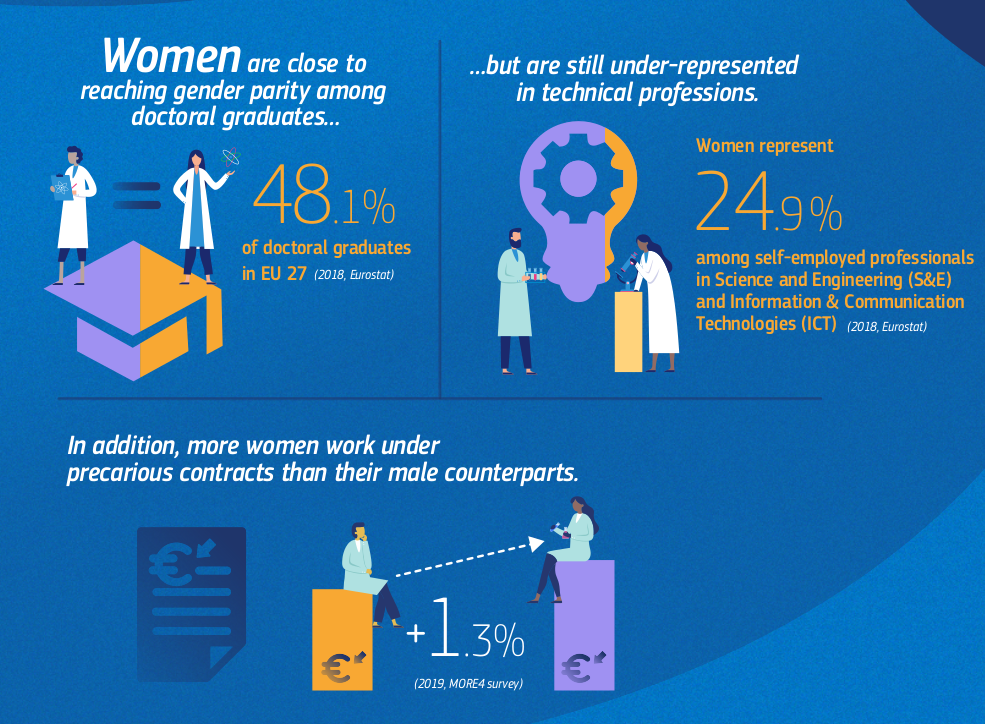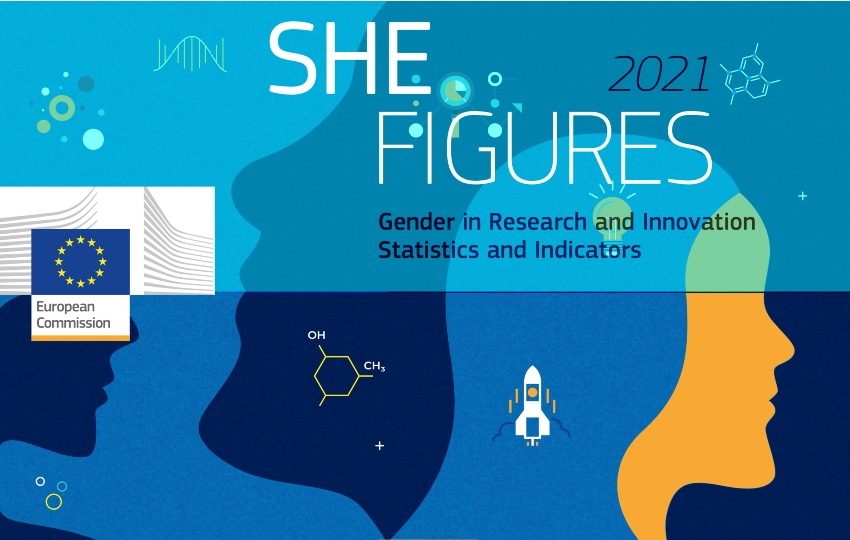Research and innovation (R&I) are the only way forward when dealing with global challenges like climate change. But without gender equality in research, how can we even argue that we put to good use our brightest minds?
According to “She figures 2021”, the EU has managed an almost gender parity in the number of doctoral graduates. However, gender gaps persist when we closely examine specific scientific fields. Most notably, someone can find gender gaps in areas like STEM or engineering. Both these fields have seen tremendous growth in recent years, and they are expected to have an increasingly important role in the near future.
For that reason, while we are still trying to figure out solutions to our biggest challenges or plan for our future, it is critical to increasing women's participation in the process. Gender equality in research is not only suitable for social inclusion, but it also adds an aspect of diversity for optimum results.
This article will talk about in more detail the situation of gender inclusion in European research.
She Figures 2021: Gender equality in research and innovation in Europe
The recent publication of “She Figures” by the European Commission was the main idea behind this article. The EC publishes “She Figures” on a triannual basis and has been the primary source of information and statistics for gender equality in research and innovation around Europe since 2003.
Gender equality on equal pay for equal work has been one of the EU's founding values since 1957 in the Treaty of Rome. This commitment to equality between women and men has been bolstered further through the years via several EU directives, legislation, and strategies. Many things have changed for the better through the years. But despite all these commitments, specific disparities still exist, like in the case of gender equality in R&I.
With the newly adopted “Gender Equality Strategy 2020-2025”, closing the gender gap in research has gained new momentum. This new dynamic can be seen in innovative policy actions to support gender inclusivity in research and innovation. For example, gender equality has become a new priority of the European Research Area (ERA). The Horizon Europe Programme has new provisions to support female researchers. There is a new funding scheme to support women startup founders.

Key Findings on Gender Equality in Research
This year’s “She Figures” follows the same structure of the previous publications, that of chronological order. Its chapters follow researchers from the time they hold their Ph.D. to having a top decision-making and leadership position in academia.
This publication covers the topics of:
- The pool of graduate talent
- Participation in science and technology occupations
- Labor market participation of researchers
- Working conditions of researchers
- Career advancement and participation in decision-making
- Research and innovation output
The key findings of this inclusive report on gender equality in research and innovation in Europe are the following:
- On average, there is almost an equal number of Doctoral graduates in Europe between men and women (48,1% in 2018),
- There are positive changes in the gender balance of Ph.D. holders at the country and EU level in the last decade (3.9% annual growth rate),
- Despite achieving gender parity in Doctoral graduates, female researchers are primarily found in fields like education. There are still significant gender gaps in fields like ICT, engineering, manufacturing, and construction,
- Underrepresentation of female scientists still exists in the majority of STEM fields, a concern that was also raised in the new Gender Equality Strategy 2020-2025,
- Significant gender gaps in research at the European level also exist in fields like the Physical Sciences, Mathematics and Statistics, ICT, engineering, manufacturing and processing, architecture and construction,
- There was no significant progress in increasing women’s participation in STEM between 2015-2018,
- In most EU countries, men seem more likely than women to go for Doctoral studies.
Conclusion
The "She Figures" report has made clear the EU priorities to achieve gender equality in research and innovation in Europe. Undoubtedly, women have gained significant ground in academia in the past decade. With revamped EU priorities and policies to promote a more gender-inclusive R&I for the future, it should only be a matter of time before we see female scientists jump to more male-dominated fields like STEM or engineering.



